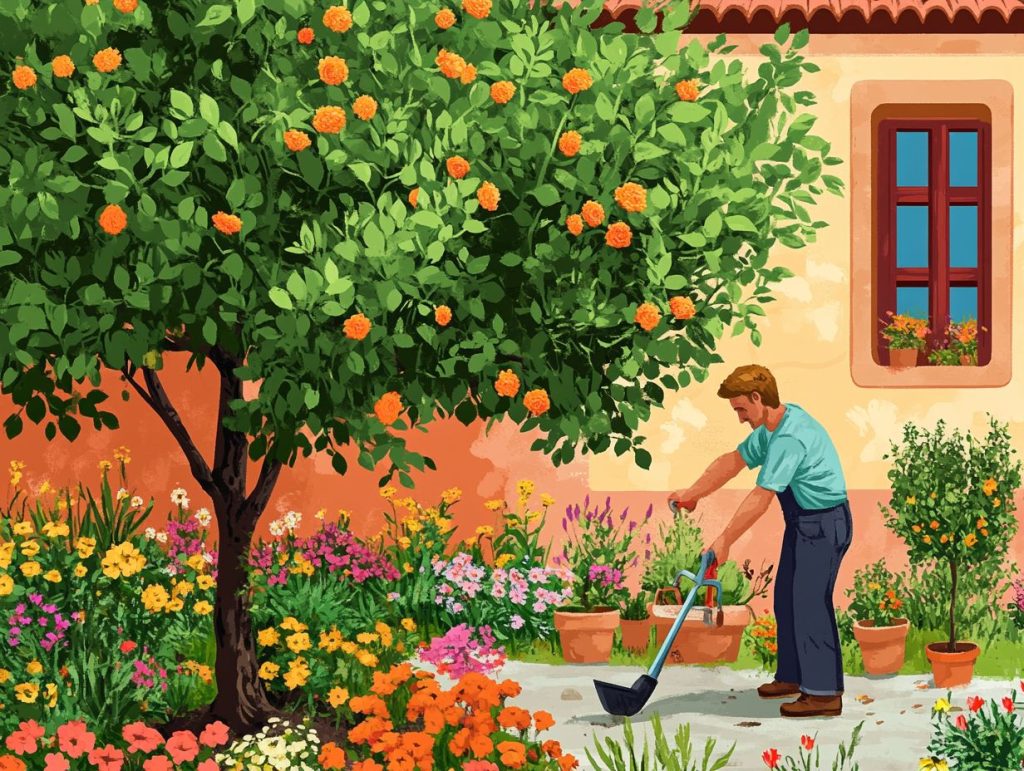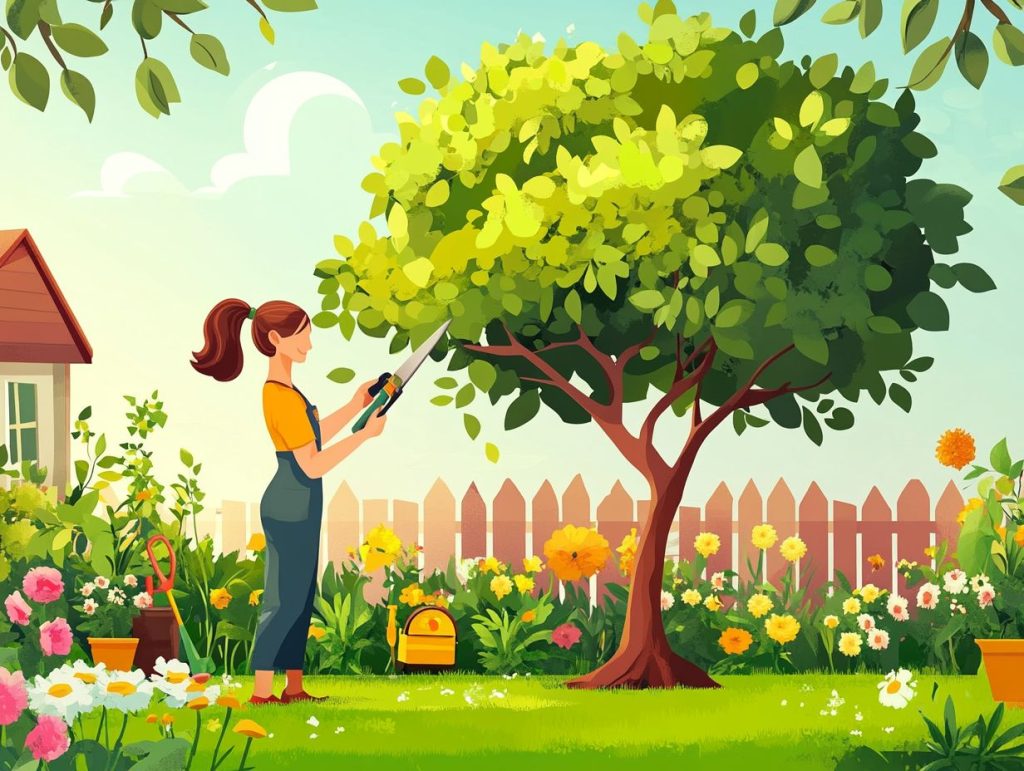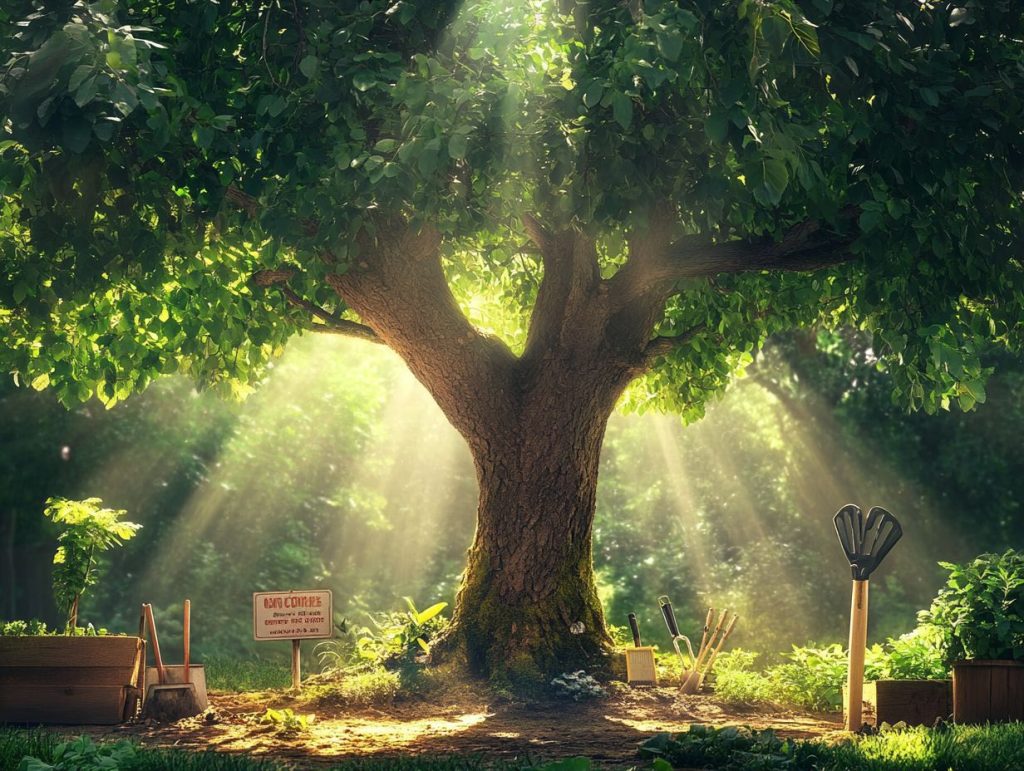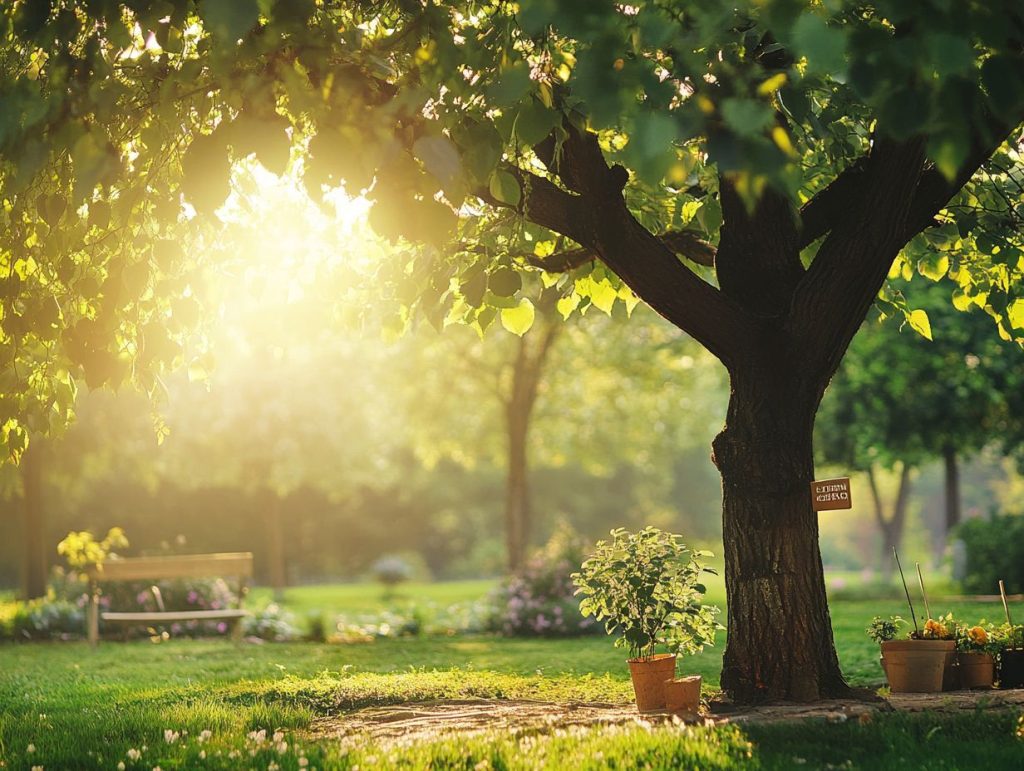Taking care of your trees isn’t just about aesthetics; it is crucial for maintaining the overall health of your property. Tree care is an essential part of home maintenance that can’t be overlooked, from enhancing curb appeal to preserving the environment.
This article explores why tree care should be part of your routine, offers tips on incorporating it effectively, and highlights common pitfalls to avoid. By the end, you’ll understand how a little tree care can significantly benefit your home and community.

Why Tree Care is Important for Home Maintenance
Tree care isn’t just about making your garden look good; it’s a vital part of home maintenance that can enhance your outdoor living space, increase your property value, and help the environment.
When you prioritise tree health, you ensure your trees live long and flourish, and you create a safe and enjoyable space for your family to relax.
Regular maintenance, such as inspections, pruning, and pest control, prevents hazards and keeps your landscape thriving. It’s all about understanding your tree species and their unique needs while considering community standards.
Reasons to Include Tree Care in Your Routine
Incorporating tree care into your routine is essential for numerous reasons. It enhances your curb appeal and helps maintain property value, contributing to a vibrant outdoor living space.
Healthy trees can significantly enhance your home’s aesthetic and provide shade, transforming your garden into a pleasant, comfortable retreat. Moreover, they offer various environmental benefits, such as improving air quality and supporting biodiversity, which enriches the local ecosystem.
Enhancing Curb Appeal
Enhancing your curb appeal is one of the quickest wins you can achieve from tree care. Well-maintained trees can elevate your home’s exterior and draw some positive attention. When you put in the effort for tree trimming and smart landscaping techniques, you create an inviting vibe that showcases your home’s charm and boosts its overall beauty.
A well-groomed landscape highlights your property’s best features and creates a harmonious environment. Different tree species, like flowering dogwoods or sturdy oaks, bring unique textures and colours that add to the outdoor aesthetics. Regular pruning is critical—it keeps your trees healthy and allows them to shine visually.
Think about layering smaller shrubs around larger trees to create depth and using strategic placement to guide the eye towards your entrance. By nurturing these natural elements, you can turn your outdoor space into an attractive retreat that beautifully complements its architecture.
Maintaining Property Value
Maintaining your property value is a great reason to invest in tree care. Healthy trees and well-designed landscapes boost your home’s market worth. When potential buyers see a lush, green garden with thriving trees, it often becomes a big selling point, leading to a higher return on investment when you’re ready to sell.
Studies back this up: a report by the Arbor Day Foundation shows that homes with well-maintained trees can see a property value increase of up to 15%. Mature trees enhance kerb appeal and provide essential shade and energy efficiency, making them even more desirable.
You can adopt several preventative care strategies to keep your trees healthy and vibrant, such as:
- regular pruning
- applying mulch
- practising proper watering
Focusing on tree health protects your investment and enhances the overall aesthetics and environmental quality of your neighbourhood.
Ensuring Safety
Ensuring safety is a top priority when it comes to tree care. Unmaintained trees can become real hazards, with falling branches or diseases that can compromise their structure. Regular tree inspections allow you to spot potential risks early so you can take action before storm damage or other issues arise, keeping your family and property safe.
As a homeowner, it’s wise to prioritise proactive assessments to catch early signs of disease, such as leaf discolouration or unusual growth patterns. Keeping up with trimming overgrown branches and removing dead wood can significantly enhance the stability and health of your trees.
Staying vigilant During storm seasons is crucial since high winds can exacerbate vulnerabilities. A solid maintenance plan, including consulting with an arborist when necessary, will help you effectively mitigate risks and ensure your trees remain safe and resilient all year round.
Preserving the Environment
Preserving the environment is a significant reason for you to prioritise tree care. Trees play an essential role in maintaining ecological balance and biodiversity, so when you ensure your trees are healthy and well cared for, you’re helping reduce pollution, improve air quality, and boost the overall health of local ecosystems.
Furthermore, healthy trees act as natural habitats for countless species, supporting the complex web of life that thrives in various ecosystems. By incorporating native species into your tree care routine, you enhance local biodiversity and make your trees more resilient against pests and diseases.
Sustainable practices like mulching and using organic fertilisers can elevate those environmental benefits to the next level. This way, you maximise trees’ ecosystem services, such as carbon sequestration and stormwater management. Ultimately, investing time and resources into tree care contributes to a flourishing environment that benefits wildlife and human populations.
Improving Air Quality
Improving air quality is one of the most significant benefits of caring for trees. Trees do a fantastic job of filtering pollutants and producing oxygen, enhancing the environment’s overall health. By keeping healthy trees around your home, you are not just making the air cleaner but also reducing your carbon footprint.
Studies show that trees have a talent for absorbing carbon dioxide and other harmful gases like sulphur dioxide and nitrogen oxides through their leaves. Additionally, they capture dust and particulate matter that can affect your respiratory health.
You will want to give your trees regular care to maximise those air-quality benefits. Pruning, watering, and mulching can help them thrive and maintain their important role of filtering out pollutants. Choosing native species well-suited to your local climate will make them more resilient and long-lasting.
Maintaining tree health enhances their air-cleaning capabilities and creates a vibrant, inviting landscape that benefits wildlife and your community.

How to Incorporate Tree Care into Your Routine
Incorporating tree care into your routine doesn’t have to feel like a major chore; it can easily become a natural part of your home and garden maintenance plan. By setting up a maintenance routine that includes seasonal tasks, you can keep your trees healthy and thriving, all while enhancing the beauty of your landscape.
Creating a Schedule
Creating a tree care schedule is key to keeping your trees healthy and ensuring your outdoor space looks great throughout the seasons. By mapping out those seasonal maintenance tasks, you can stay organised and effectively manage your trees’ health while boosting their visual appeal.
This strategy helps you track the best times for important activities like pruning, watering, and fertilising. It also acts as a proactive measure against pesky pests and diseases. For example, if you prune in early spring, you’ll encourage robust growth, and if you water on schedule during dry spells, your trees will stay nicely hydrated. Applying fertiliser at the start of the growing season gives your trees the nutrients they need for strong foliage development.
By weaving these essential tasks into a solid plan, you’ll create a vibrant and resilient garden that shines all year round.
DIY vs Hiring Professionals
Deciding between DIY tree care and hiring professionals means weighing your skills, available resources, and the complexity of the tasks. Certainly, you can handle some maintenance activities independently. Still, for specific jobs, such as tree removal or diagnosing diseases, it’s best to call a professional arborist to keep things safe and effective.
Tackling tasks like regular pruning, watering, and mulching can be rewarding and save money, especially if you’re comfortable with basic gardening techniques. However, when the issues become complicated, such as needing to remove a tree or figure out what’s wrong with it, you might be over your head without the right equipment and expertise. It’s important to weigh the advantages, such as saving money and feeling accomplished, against the disadvantages, such as potential hazards and the risk of harming the tree.
As you consider tree maintenance, monitor the tree’s health and be aware of when specialised tools might be needed. When hiring experts, look for reputable tree services with good reviews, certifications, and a solid track record. That can make a difference in achieving the best results.
Essential Tools and Techniques
Equipping yourself with the right tree care tools and mastering essential techniques is the secret ingredient to keeping your trees healthy and happy. From pruning shears to irrigation systems, knowing which tools to choose can elevate your outdoor maintenance game.
Once you have this sorted, you’re not just caring for trees; you’re creating a beautiful landscape that benefits the environment in numerous ways. One of the first things you should consider is investing in a good set of pruning shears. They’re your best allies for snipping away dead or diseased branches and encouraging fresh growth.
You’ll also want an efficient irrigation system to ensure your trees receive plenty of water, especially when the weather turns dry. And don’t forget about pest control! Protecting your trees from infestations is crucial whether you opt for organic sprays or targeted traps.
It’s all about knowing when to use these tools and keeping them in excellent condition to achieve the best results in your tree care journey.
Common Mistakes to Avoid in Tree Care
Avoiding common mistakes in tree care is key to keeping your trees healthy and ensuring your garden thrives. You can save your trees from unnecessary harm by recognising these pitfalls—such as over-pruning, overlooking early signs of tree diseases, or mishandling pest control.
Overpruning
Overpruning is a common mistake affecting a tree’s health and lifespan. If you remove too many branches, the tree can experience shock and stunt growth. Knowing the proper pruning techniques keeps your tree healthy and promotes vigorous growth.
When pruning, remove just enough branches to allow light and air to circulate without compromising the tree’s overall structure. A solid rule of thumb is never to remove more than 25% of the canopy in one go. Going overboard can stress the tree and make it more vulnerable to pests and diseases.
If you are unsure, consulting a professional arborist can be a game-changer. They can provide valuable insights and help you meet the specific needs of your tree species. Additionally, they can assist you in creating a pruning schedule that fits your tree’s growth patterns, leading to a more vibrant and resilient plant.
Ignoring Warning Signs
Ignoring warning signs in your trees can lead to serious issues, from tree diseases to safety hazards. Regular tree inspections are crucial—they help you catch those early indicators and take action before things get out of hand.
As a property owner, it’s crucial to familiarise yourself with common distress signals. For example, drooping leaves, unusual bark shedding, or visible pests can all point to underlying problems. Paying attention to these changes is essential since they often signal bigger issues further down the line.
By taking a proactive approach, you keep your landscape looking good and enhance the overall health of your trees. Timely intervention can help prevent pest invasions, reducing the need for extensive pest control measures. By watching these signs, you can ensure your trees remain vibrant and safe for everyone.
Using Harmful Chemicals
Using harmful chemicals in tree care can disrupt your trees’ health and impact the surrounding ecosystem and biodiversity. By opting for organic gardening and sustainable practices, you can keep your trees healthy while being considerate of the environment.
When you rely on those toxic substances, you risk degrading the soil and harming the beneficial insects vital for pollination and pest control. This can create a ripple effect that affects not just your trees but entire landscapes.
Adopting organic pest control methods, such as introducing natural predators or using neem oil, is crucial. These safer alternatives keep your trees healthy and help promote a thriving ecosystem.
Implementing sustainable practices, such as mulching and proper watering techniques, helps your trees build resilience and contributes to a greener, healthier environment for everyone.

